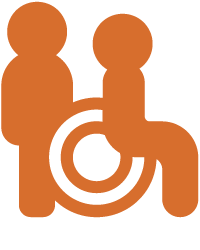What is Anxiety?
Anxiety is a natural emotional response to stress, uncertainty, or danger. It is characterized by feelings of nervousness, worry, and fear. While occasional anxiety is normal, excessive or prolonged anxiety can interfere with daily life and become a mental health disorder requiring attention.
Types of Anxiety Disorders
-
Characterized by chronic and excessive worry about everyday activities, such as work, relationships, or finances, even in the absence of immediate threats. People with GAD may experience restlessness, difficulty concentrating, and muscle tension.
-
Involves sudden and repeated panic attacks—intense episodes of fear accompanied by physical symptoms such as rapid heart rate, chest pain, shortness of breath, and dizziness. Panic disorder can lead to avoidance behaviors to prevent future attacks.
-
A persistent and intense fear of social interactions and situations, often stemming from fear of judgment or embarrassment. This can lead to avoidance of public speaking, social gatherings, or even everyday activities like shopping or eating in public.
-
A disorder in which individuals experience intrusive thoughts (obsessions) that cause distress and compel them to perform repetitive behaviors (compulsions) to alleviate anxiety. Common compulsions include excessive handwashing, checking, or counting.
-
Develops after exposure to a traumatic event, such as war, abuse, accidents, or natural disasters. Symptoms include flashbacks, nightmares, severe anxiety, and avoidance of reminders of the trauma.
-
An intense and irrational fear of a specific object, situation, or activity, such as heights (acrophobia), enclosed spaces (claustrophobia), or flying (aviophobia). Exposure to the phobic stimulus can trigger overwhelming anxiety or panic attacks.
-
Typically seen in children but can affect adults, this disorder involves excessive fear or distress when separated from loved ones or familiar environments. It can lead to difficulty functioning independently.
-
A preoccupation with having a serious medical condition, despite reassurance from doctors. Individuals may frequently check their bodies for signs of illness, research symptoms obsessively, or seek multiple medical opinions.
-
A rare childhood anxiety disorder in which a person is unable to speak in certain social situations despite speaking comfortably in familiar settings. It is often linked to extreme social anxiety.
Anxiety can manifest in various forms, each with distinct symptoms and effects on an individual’s daily life. Below are some of the most common anxiety disorders:
Anxiety disorders result from a combination of genetic, environmental, and psychological factors, including:
Causes and Risk Factors
Genetics
A family history of anxiety can increase susceptibility.
Brain Chemistry
Imbalances in neurotransmitters like serotonin and dopamine may contribute to anxiety.
Personality Traits
Individuals with perfectionist tendencies or low self-esteem may be more prone to anxiety.
Life Experiences
Trauma, abuse, or prolonged stress can trigger anxiety disorders.
Medical Conditions
Some illnesses, medications, or substance use can induce anxiety symptoms.
Common Symptoms of Anxiety
Anxiety can present itself in various ways, affecting a person’s emotions, body, and behavior. The severity and combination of symptoms can differ from person to person and may range from mild to debilitating.
-
• Excessive and persistent worry, even in the absence of immediate threats
• Feelings of dread or a sense of impending doom
• Irritability and restlessness, often leading to frustration or mood swings
• Difficulty controlling anxious thoughts, making it hard to focus on tasks
• Feeling overwhelmed or constantly on edge
-
• Increased heart rate or palpitations (feeling like the heart is racing)
• Excessive sweating, even in cool temperatures
• Shaking or trembling, particularly in high-stress situations
• Shortness of breath or hyperventilation, often linked to panic attacks
• Dizziness or lightheadedness, sometimes leading to fainting
• Tension headaches or migraines due to muscle tightness
• Gastrointestinal issues such as nausea, stomach cramps, or irritable bowel syndrome (IBS)
• Fatigue and exhaustion, even without physical exertion
• Insomnia or difficulty staying asleep due to racing thoughts
-
• Avoidance of anxiety-provoking situations (e.g., avoiding social events, public speaking, or travel)
• Increased dependence on safety behaviors (e.g., constantly checking surroundings, carrying comfort objects, or seeking reassurance from others)
• Procrastination or difficulty starting tasks due to fear of failure
• Engaging in compulsive behaviors or rituals to ease anxiety (common in OCD)
• Difficulty concentrating or feeling like the mind is “foggy” or “blank” during stressful moments
• Withdrawal from friends, family, or work due to overwhelming stress
-
• Persistent negative thoughts and self-doubt
• Overanalyzing past interactions or worrying excessively about future events
• Catastrophic thinking, expecting the worst possible outcome in situations
• Difficulty making decisions due to fear of making the wrong choice
• Feeling disconnected from reality or experiencing derealization/depersonalization
How to Cope with Anxiety
Managing anxiety involves a combination of lifestyle changes, therapy, and, in some cases, medication. Here are effective coping strategies:
-
• Mindfulness & Meditation: Practicing mindfulness can help individuals stay present and reduce anxious thoughts.
• Deep Breathing Exercises: Techniques such as diaphragmatic breathing or the 4-7-8 method can calm the nervous system.
• Journaling: Writing down thoughts and worries can provide clarity and emotional release.
• Regular Physical Activity: Exercise releases endorphins, which help reduce stress and improve mood.
-
• Cognitive Behavioral Therapy (CBT): A structured therapy that helps individuals identify and change negative thought patterns.
• Medication: In some cases, doctors prescribe antidepressants or anti-anxiety medications to help manage symptoms.
Exposure Therapy: Used for phobias and PTSD, this technique helps individuals gradually face their fears in a controlled setting.
-
• Healthy Diet: Reducing caffeine, alcohol, and processed foods can improve mood stability.
• Adequate Sleep: Establishing a regular sleep routine helps regulate emotions and stress levels.
• Social Support: Talking to friends, family, or joining support groups can alleviate feelings of isolation.
When to Seek Help
If anxiety significantly interferes with daily life, professional intervention may be necessary. Signs that indicate the need for professional help include:
• Persistent anxiety lasting more than six months
• Avoidance of normal activities due to fear or worry
• Panic attacks or severe physical symptoms
• Thoughts of self-harm or suicidal ideation
Anxiety is a common yet manageable condition. Through self-care, therapy, and medical intervention, individuals can regain control over their anxiety and lead fulfilling lives. If you or someone you know struggles with anxiety, reaching out for support is the first step toward relief and healing.
Prevalence and Demographics of Anxiety in Australia
Anxiety disorders are the most common mental health conditions in Australia, affecting around 14% of the population each year.
Women are more likely to experience anxiety than men.
Young adults and adolescents report higher levels of anxiety compared to older age groups.
Indigenous Australians experience higher rates of anxiety and related mental health conditions.
Key Study:
📌 Tracking the Course of Depressive and Anxiety Symptoms Across Adolescence (CATS Study)
A longitudinal study published in Lancet Psychiatry (2024) examined adolescent anxiety trends in Australia.
It identified a steady rise in anxiety symptoms from early to late adolescence.
Link: The Lancet Psychiatry
Anxiety in Children and Adolescents
A recent study published in JMIR Mental Health (2025) evaluated internet-based cognitive behavioural therapy (CBT) for children and adolescents.
The study found significant reductions in anxiety symptoms among Australian children aged 7 to 17 years.
Highlights the importance of early interventions to prevent long-term mental health challenges.
Key Study:
📌 Internet-Delivered CBT for Child and Adolescent Anxiety
Conducted with 137 Australian children diagnosed with primary anxiety disorders.
Online CBT was as effective as traditional face-to-face therapy.
Link: JMIR Mental Health
Social Media and Anxiety Among Youth
The Australian government recently introduced a law banning social media for youth, responding to increasing concerns over mental health.
Studies indicate a strong correlation between social media use and symptoms of anxiety and depression.
The impact is particularly severe among teenagers aged 12-18.
Key Study:
📌 Youth Social Media Use and Anxiety (2025)
Highlights the negative impact of social media on mental health.
Advocates for digital detox programs to reduce anxiety levels.
Link: BC Medical Journal
Economic Anxiety in Australia
Anxiety levels are also influenced by economic uncertainty, unemployment, and cost-of-living concerns.
A study by the Australian National University (2025) analysed how macroeconomic variables affect anxiety.
Key Study:
📌 How Do Macroeconomic Variables Affect Voter Anxiety?
Found a direct link between rising unemployment and increased anxiety levels.
Economic instability is a key driver of mental distress in working-age Australians.
Link: ANU Research
Anxiety in Medical Conditions
A study in Kidney International Reports (2025) found that patients with chronic illnesses, such as renal disease, experience heightened anxiety.
In a study of 300,000 patients in Victoria, death-anxiety was particularly prevalent among those facing end-stage renal disease.
Key Study:
📌 Influence of Emotions on Confronting Death in End-Stage Renal Disease
Examines psychological distress in terminally ill patients.
It suggests mental health interventions for improving quality of life.
Anxiety and Chronic Illness
Key Study:
📌 Mental Health Burden in Pediatric IBD Patients
Research in the Journal of Croh’s and Colitis (2025) examined mental health and anxiety among children with inflammatory bowel disease (IBD).
Anxiety levels were significantly higher in children with chronic illness.
Found a high prevalence of anxiety and depression in Australian paediatric patients with chronic conditions.
Calls for mental health screenings in routine healthcare.
Anxiety and Opioid Use
Key Study:
📌 Psychological Distress, Anxiety, and Opioid Use in Crohn’s Disease
Patients with high anxiety had a 2.5x increased likelihood of opioid use.
Calls for integrated mental health support.
A study in the Journal of Croh’s & Colitis (2025) found that patients with Cro’s disease experiencing high anxiety had increased rates of opioid use.
Highlights the risk of medication dependency in managing anxiety-related symptoms.

Anxiety in Older Australians
Older Australians with a history of childhood adversity show higher rates of anxiety and cognitive decline.
A UNSW study (2025) found childhood trauma linked to late-life mental health issues.
Key Study:
📌 The Impact of Childhood Adversity on Late-Life Mental Health
Examines how early-life stressors influence anxiety in ageing populations.
Link: UNSW Research
Trends Identified
Rising anxiety rates among adolescents and young adults.
Strong link between economic stressors and mental health.
High prevalence of anxiety in chronic illness patients.
Social media as a major contributor to anxiety among youth.
Recommendations
Expand access to mental health services: more funding for therapy and early intervention programs.
Economic policies that address employment security to reduce financial stress-induced anxiety.
Social media regulation: policies that limit youth exposure to anxiety-inducing content.
Integration of mental health screening in chronic disease management.
Further Reading:
-
Mental Health Statistics
-
Anxiety Disorders
-
Research on Anxiety
Struggling with anxiety and need time off? Get a valid medical certificate online from an Australian doctor in minutes. No appointments, no hassle—just fast, professional telehealth service.
Anxiety Leave Made Simple – Get Your Medical Certificate Online Now!


















